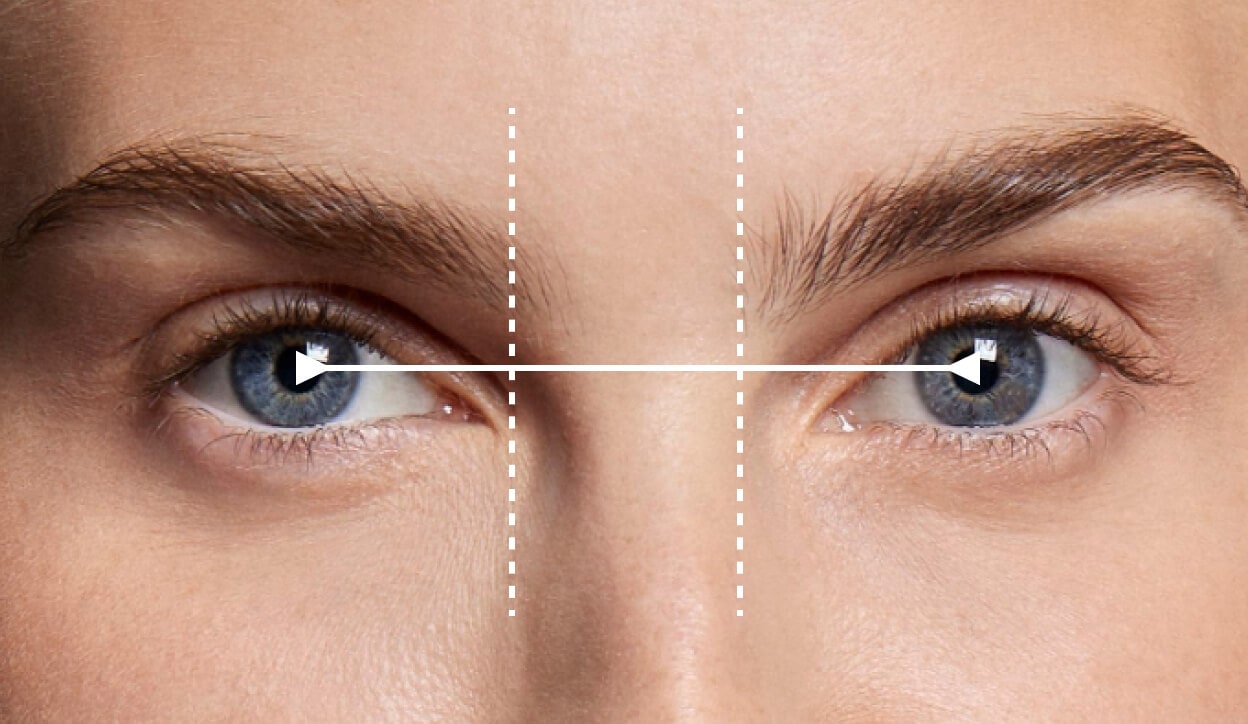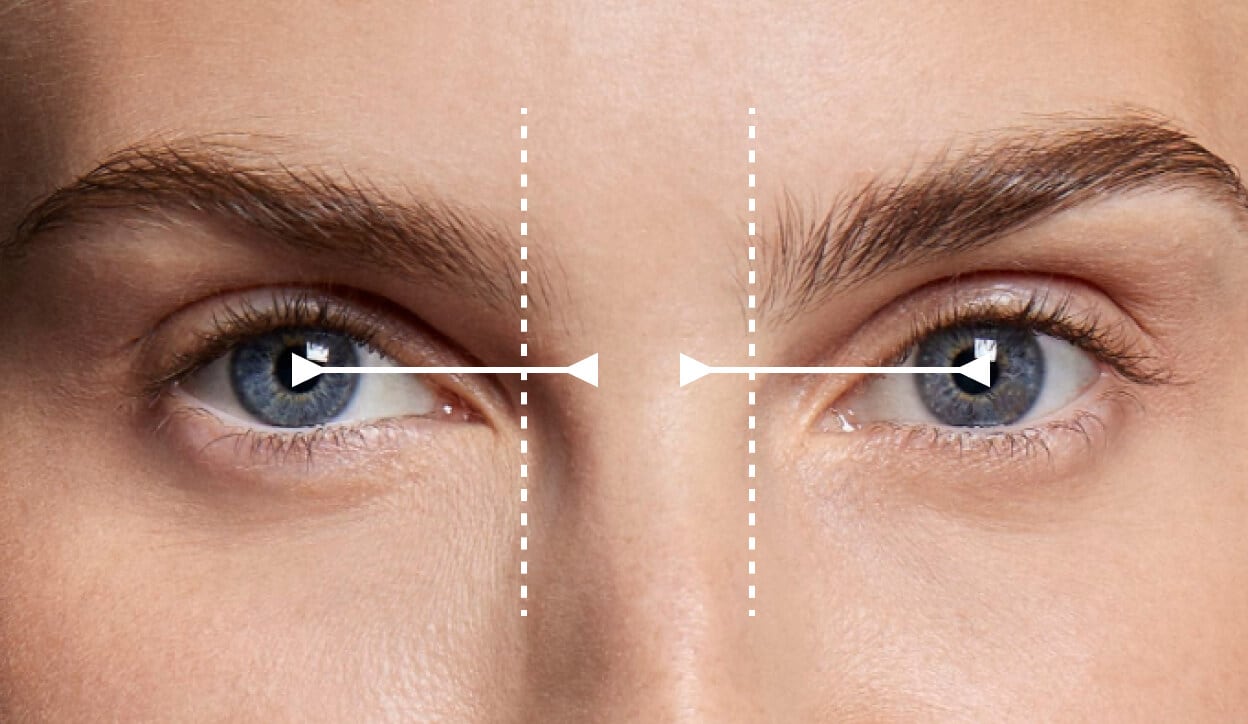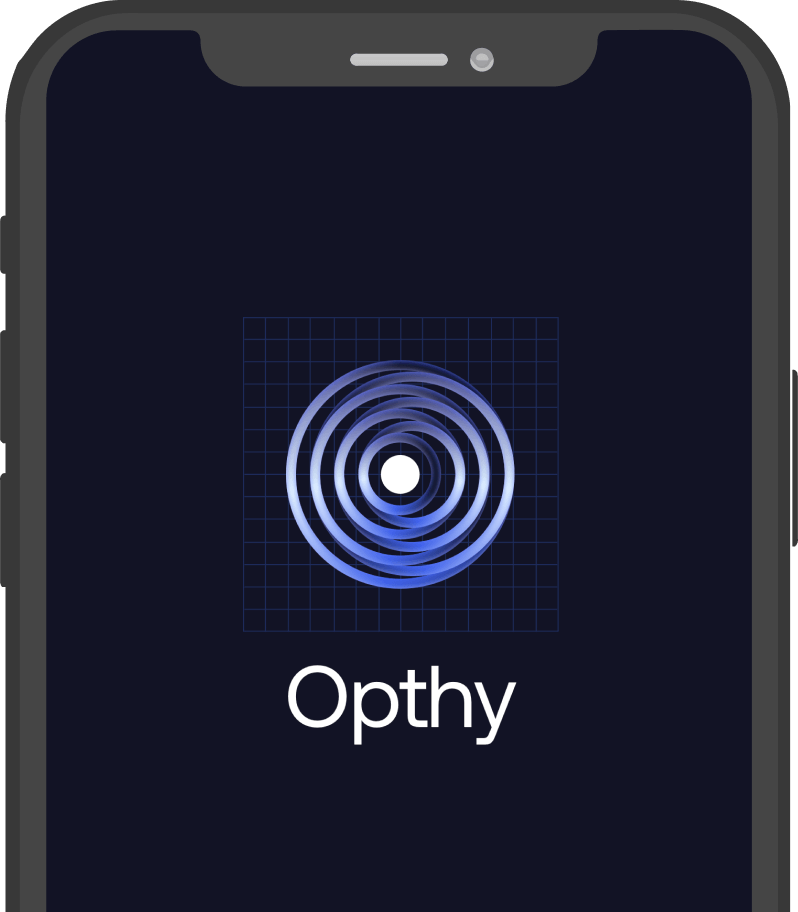How to measure
pupillary distance
(PD)
What is PD?
Your Pupillary Distance, or PD, is the distance in millimeters (mm) between the center of one pupil to the center of the other. A personalized fit starts with measuring your pupillary distance: it indicates which part of the lens you look through, ensuring optimal comfort and clarity.
Why is it important?
If your PD isn’t right, it can cause eye strain, fatigue, or simply not being able to see properly. The higher your prescription, the bigger the effect an incorrect PD can have. So get measuring!

What Is Single Vs Dual PUPILLARY DISTANCE?

Single PD
SINGLE PD is the pupillary distance between the center of one pupil to the other, which can be a distance PD or near PD. Distance PD can be used to order any type of prescription glasses except reading glasses. Read below to learn how to calculate near PD for reading glasses.

Dual PD
DUAL PD, or monocular PD, consists of two numbers and is the distance between the centers of each pupil to the bridge of the nose. Dual PD is usually written in the following notation: 32/30. The first number is always the right eye (OD) measurement, and the second number is the left eye (OS).
HOW TO GET YOURS?
You can ask your eye doctor to include your PD measurement on your prescription, or if you don’t have it, you can use one of the following methods to measure it—it’s super easy!
START USING OPTHY
With just a few clicks, Opthy measures your Pupillary Distance allowing you to find the most
comfortable, personalized fit. Discover more
Start using Opthy
Scan the QR code and download the app.
With just a few clicks, OPTHY measures your Pupillary Distance so you get the perfect fit.
App available on iPhone X and above.

Problems with the QR code?
See the app on the App Store.
Meets industry guidelines for accuracy (ANSI Z80.1 and ISO21987 standards)
1 Compatible with single-vision prescription lenses between -5D and +5D.
2 Not intended for use by people under the age of 18.

GLASSES METHOD:
What you will need
1. Position yourself
Focus on an object 20 feet away.
Smart tip
If measuring for near-sighted glasses, focus on a close object like reading material or a computer screen.
2. Use the ruler
Stand about 8” away from a well-lit mirror.
Look straight ahead into the mirror and position the ruler over the bridge of your nose.
3. Measure
Starting with the right eye, line up the zero end of the ruler at your pupil; measure the distance from your right to your left pupil. The millimeter number that lines up with your left pupil is the measurement you want: that number is your PD!
Smart tip: Just to be sure, measure a few more times to make sure you get the same number. You want it to be accurate. The average range of an adult PD is 54-74 mm, the average range of a child PD: 43-58 mm
RULER ONLY METHOD:
What you will need
1. Position yourself
Face your friend and have them crouch/sit while you stand so they are out of your field of vision.
Look straight ahead with both eyes open, try keeping your eyes as still as possible.
Smart tip: look above his/her head at something approximately 10-20 ft. away.
2. Measure your left eye pd
Have your friend hold the ruler up to your right so the zero end lines up with your pupil. Measure the distance from your right to your left pupil. The number that lines up with your left pupil is your PD.
Smart tip: Just to be sure, measure a few more times to make sure you get the same number. You want it to be accurate.
3. Measure your right eye pd
Have your friend repeat the process on your right eye by measuring the distance from your right pupil to your left. Use the number that lines up with your left pupil.
Do you need additional help in finding your PD? Book an eye exam in store
Choose your location
Schedule an eye exam
Add to calendar




















































